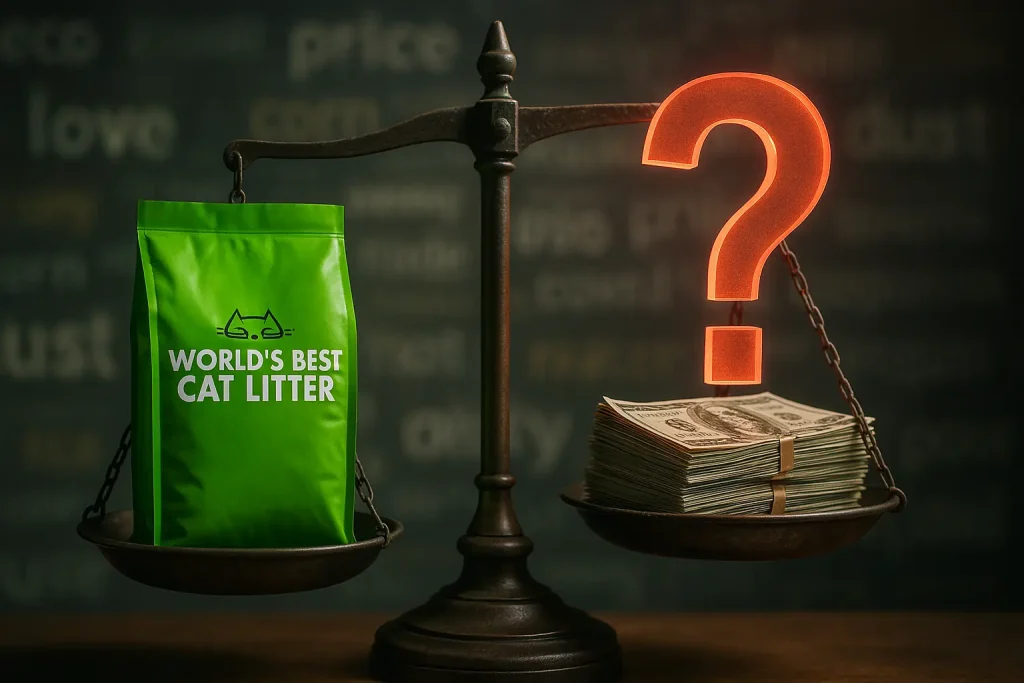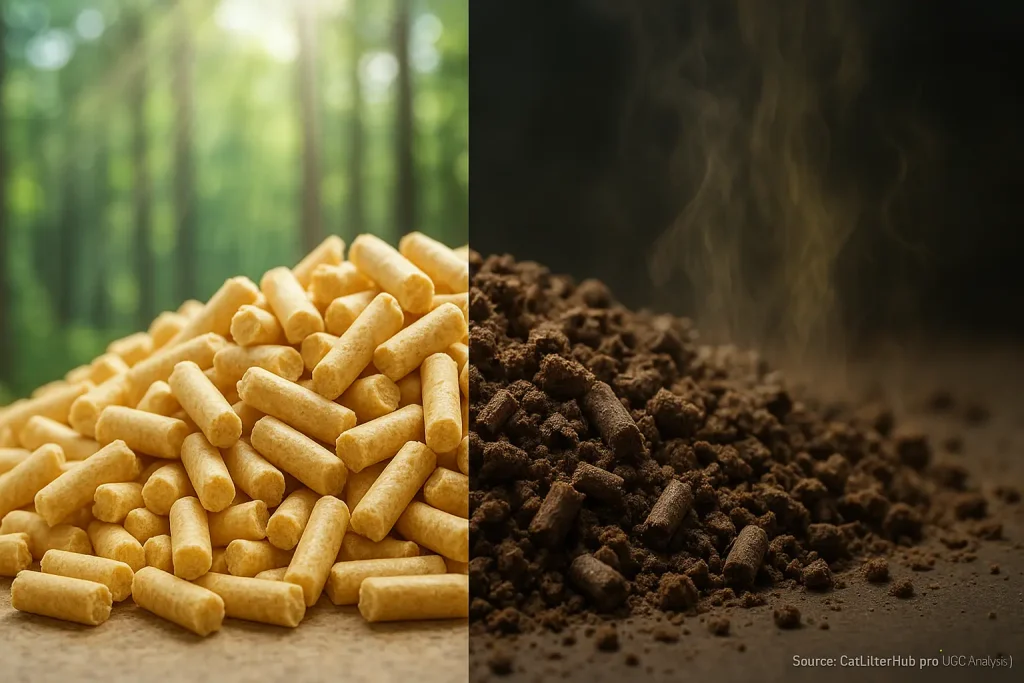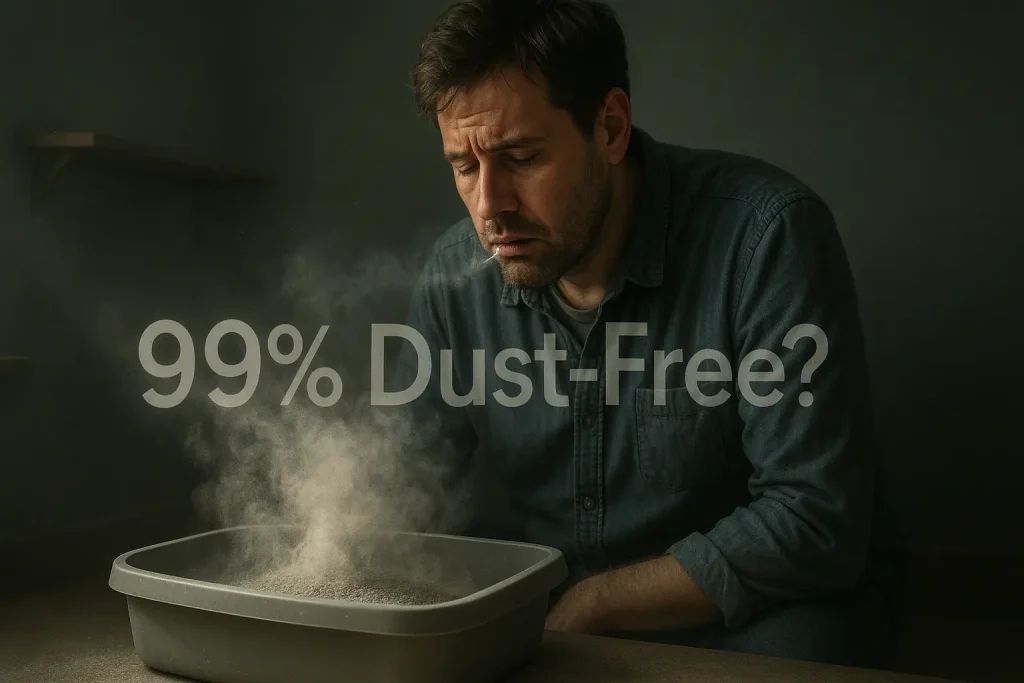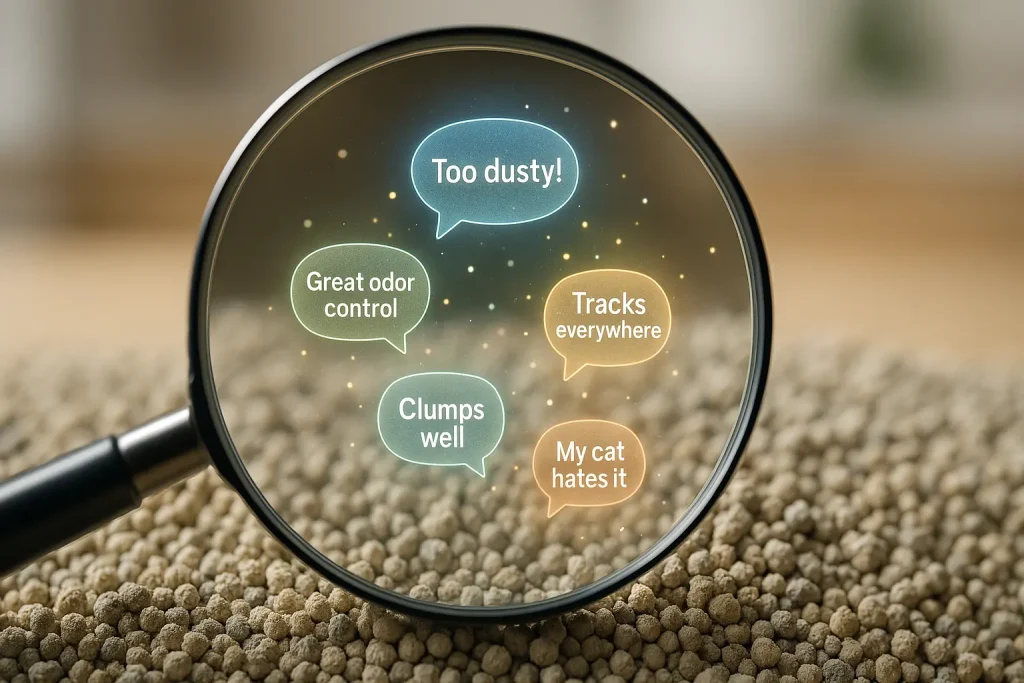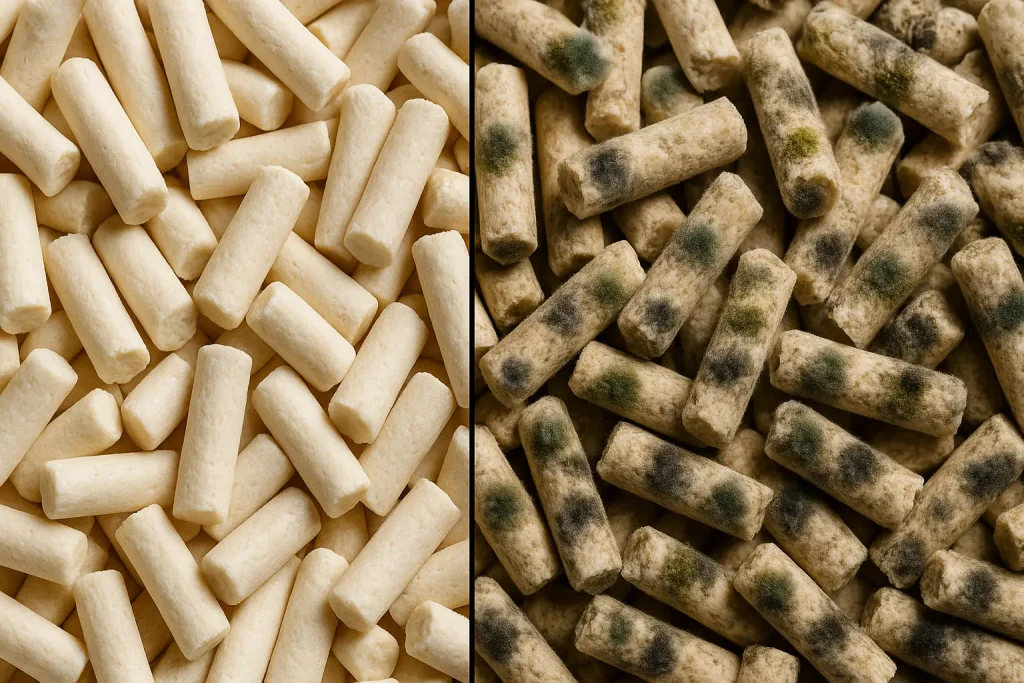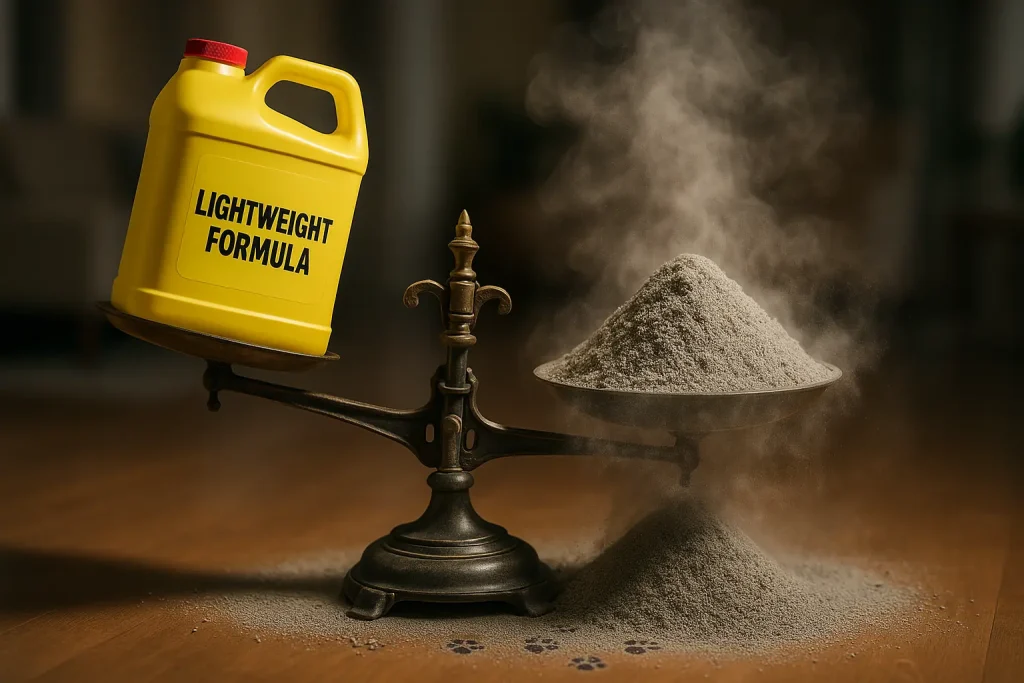The Glossy Promises vs. The Fine Print: Unpacking Litter Hype
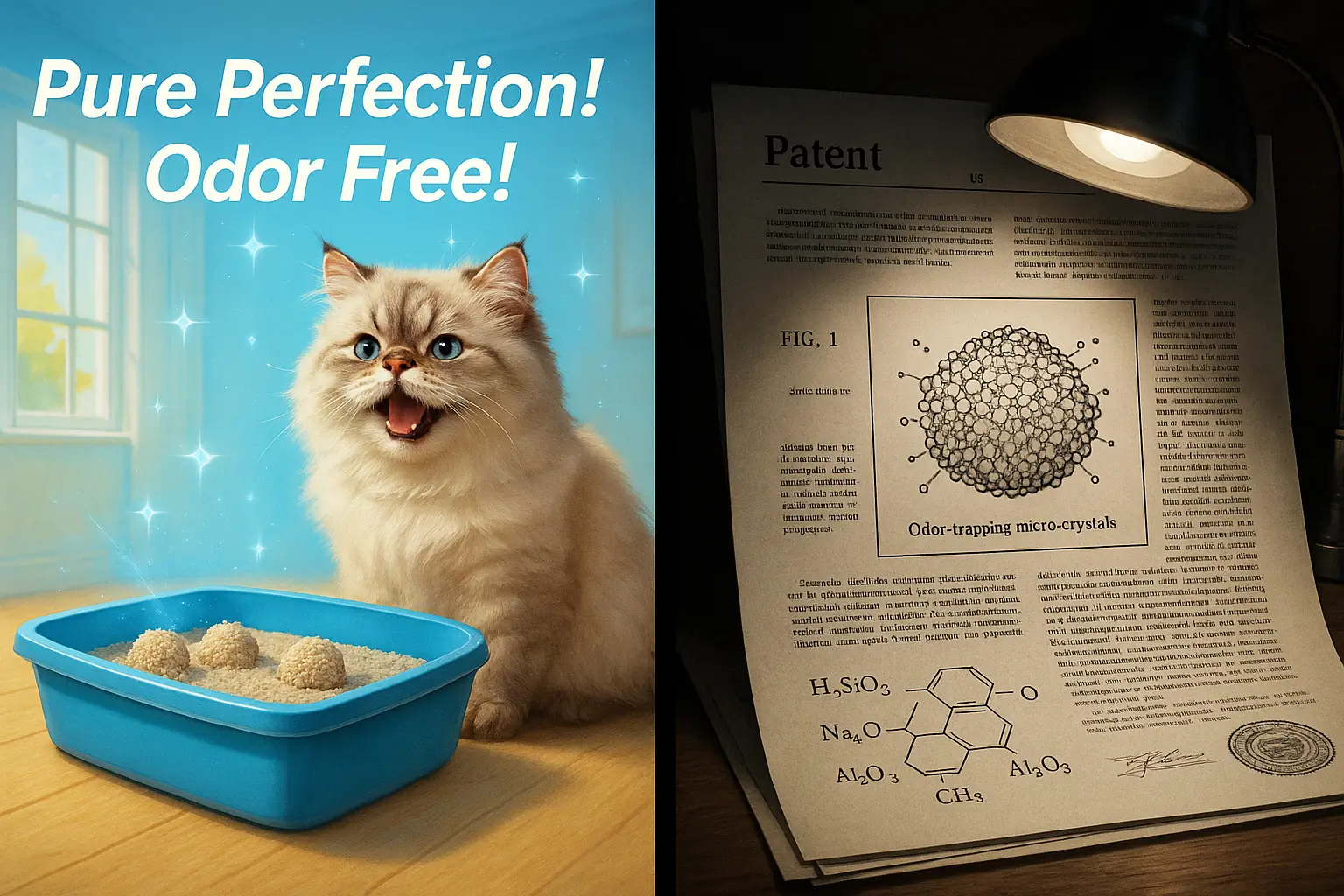
Cat litter ads paint a perfect picture. Total odor annihilation. Rock-solid clumps. Every single time. Many cat owners see these glossy promises daily. But what's the real story behind the bag?
The fine print often tells a different tale. Complex ingredient lists can confuse even savvy shoppers. Imagine trying to decode a patent for 'advanced odor-neutralizing particles'. It's a far cry from the happy cat on the packaging, isn't it? Users simply want to know: does it actually deliver?
Cat Litter Hub is now peeling back these layers. We investigate the gap between marketing sparkle and potential product reality. Think of it as 'CSI: Litter Box'. Our team examines common advertising tactics. We explore what technical details could reveal. This helps you see beyond the hype. You get the unvarnished truth.
Marketing Buzzwords vs. User Reality: What Do "Odor Lock" & "Dust-Free" REALLY Mean?
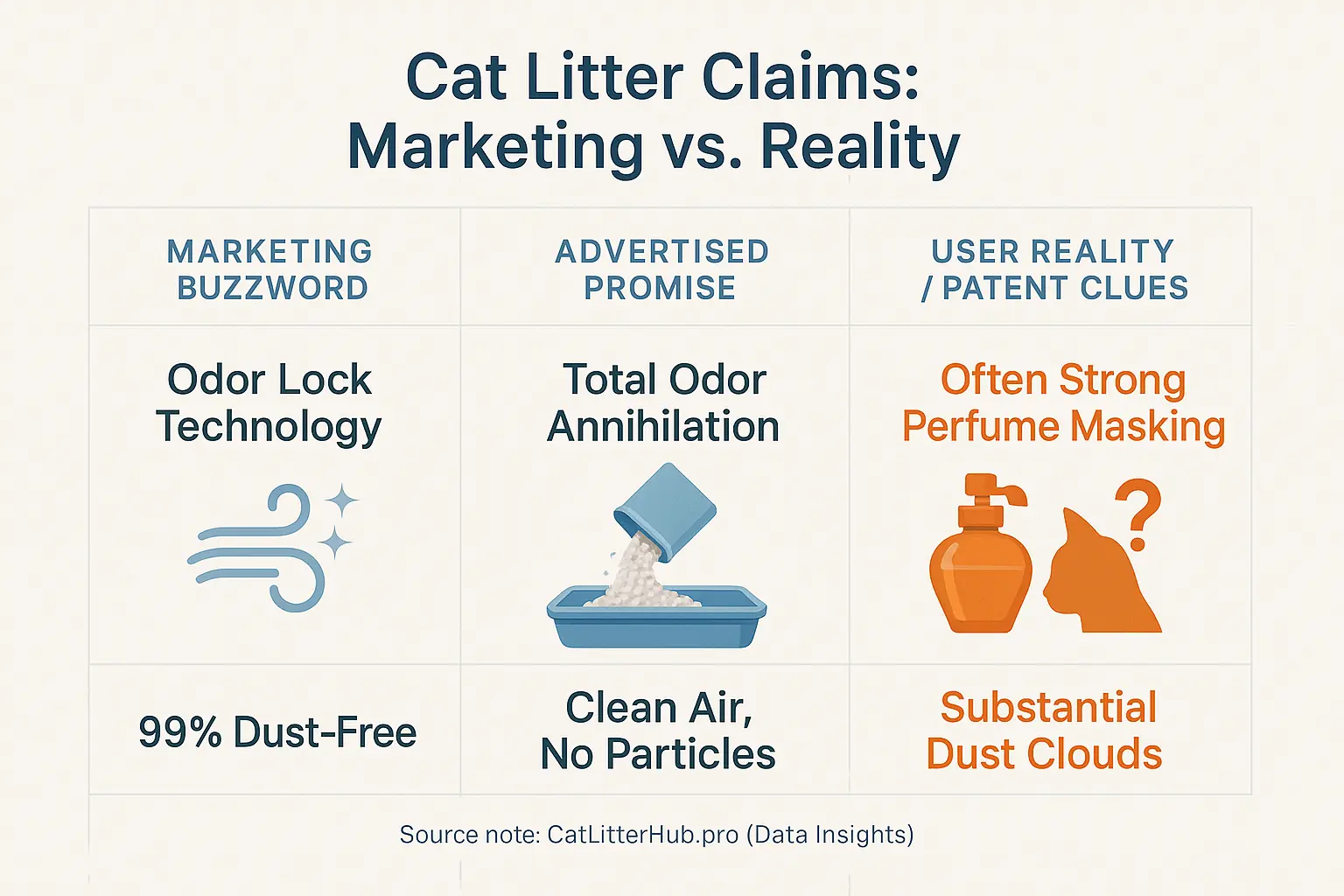
Cat litter marketing often uses appealing terms. "Odor Lock Technology" is a common one. It promises a completely scent-free home environment. Brands paint an ideal picture: total odor elimination. Your litter box, they suggest, becomes an invisible, odorless fixture. This technology supposedly traps all unpleasant smells instantly. No more embarrassing pet odors. Your house stays fresh.
User experiences frequently tell a different story. What owners consistently report is often heavy perfumes, not true odor neutralization. Imagine this: an initial blast of strong artificial scent hits you. This overpowering fragrance might mask odors for a short while. Soon, however, the underlying ammonia starts peeking through. Many cats, with their highly sensitive noses, turn away from these intensely perfumed litters. Our deep dive into user comments reveals this rejection is a significant issue for cat acceptance.
So, what might patents for "Odor Lock" actually detail? Speculation suggests they could list various chemical masking agents. These compounds primarily cover up smells, rather than truly neutralizing or eliminating them. Alternatively, patents might specify absorbent materials like activated carbon. While helpful, these materials often have a limited capacity to trap odors effectively long-term. This discrepancy between marketing and user experience highlights a common challenge.
Another popular claim is "99% Dust-Free." This phrase suggests a remarkably clean pouring experience. Manufacturers want you to imagine fresh, clear air. No choking dust clouds. The promise directly targets easier breathing for both you and your feline companion. It also implies significantly less cleaning effort around the litter box area.
The reality reported by thousands of cat owners varies wildly. Many users still observe considerable dust. Pouring new litter, especially some clay varieties, can unleash a surprising plume. This is a frequent observation in reviews. This fine dust then settles on furniture and floors. Worse, it can trigger respiratory concerns for sensitive pets and people. The "99% dust-free" marketing claim often doesn't match everyday home use.
Patent filings for these "dust-free" formulas could be quite revealing. They might describe specific coating processes applied to litter granules. Or, they could detail particular granule sizes and shapes engineered to reduce dust. Reduce, not eliminate. That "99% dust-free" figure? It likely originates from controlled laboratory tests. These testing conditions rarely replicate the dynamic environment of actual home usage, with varying pouring techniques and air currents.
"All Natural Ingredients" is a buzzword that strongly implies ultimate safety and eco-friendliness. Marketers use it to suggest a product in perfect harmony with nature, and therefore, perfect for your cat. This label frequently leads owners to expect a litter free from synthetic chemicals. They anticipate making a truly benign, environmentally conscious choice. The core promise is a worry-free product.
User feedback, however, highlights some unexpected drawbacks with "natural" litters. For instance, plant-based litters like corn, wheat, or pine sometimes attract bugs. This is a common theme in online cat communities. In humid climates, mold growth can become an issue for these organic materials. Some sensitive cats even develop surprising allergic reactions to these supposedly gentle, natural components. It’s clear from countless reviews: "natural" does not always equate to "problem-free" or "universally safe" for every household or every cat.
What could patents for "all natural" litters disclose beyond the obvious? They would certainly list primary plant-based components. Corn, pine, wheat, or walnut shells are common. But, they might also include various processing aids or natural binders essential for product integrity. Some formulations could even contain natural enzymes or mineral derivatives. The full implications or potential interactions of all "natural" components are not always transparent in marketing materials, leaving some questions for discerning owners.
Patent Files Unlocked (Conceptually): What Secrets Could They Hold?
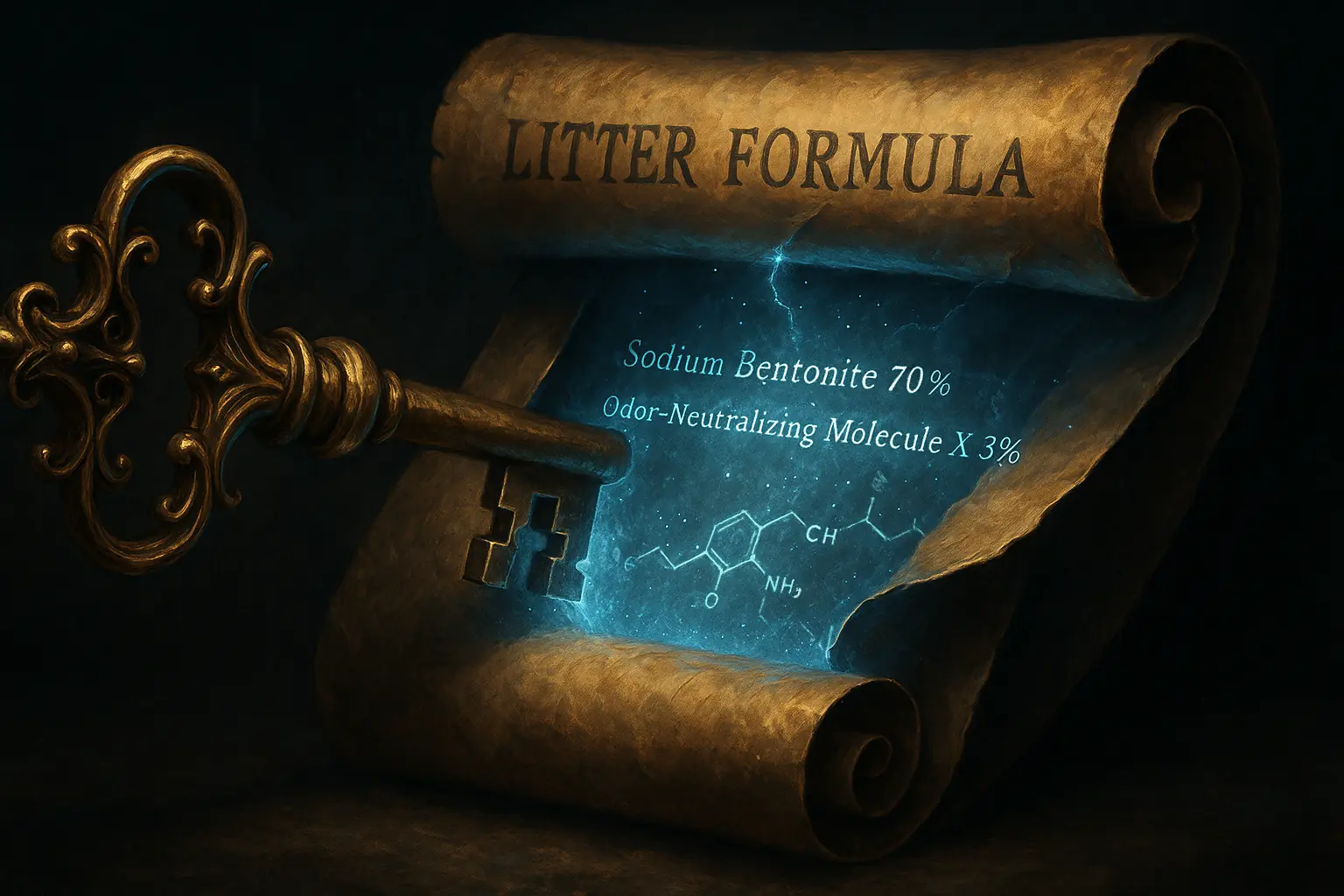
Cat litter patents, by their legal design, must disclose an invention's specific 'how-to'. This disclosure requirement could unveil exact ingredients. It might detail chemical compounds within a cat litter formula. Marketing often describes these vaguely. You see 'proprietary blend' on packaging. Think of a patent as the secret recipe card. The manufacturer has to file this card. It might list 'Ingredient X at 15%'. Marketing just calls this a 'special clumping agent'. Such specifics could offer genuine insight into what you are actually buying.
Manufacturing processes detailed in patents could also explain product variations. Users frequently report these inconsistencies. For instance, granule formation techniques might be specified. The methods for applying special coatings could be outlined. Ever wonder why one bag of 'low-dust' litter is perfectly fine? Then the next bag creates a dust storm? A patent might detail a specific coating process. If that process is not perfectly executed every single time, it potentially leads to these user-reported inconsistencies in dust levels or texture.
Patents may also describe the true scientific mechanism for key litter features. How does 'odor control' actually work? What is the real clumping technology? The science revealed in a patent could be more complex than marketing suggests. Or, perhaps, it is less 'magical' than simplified messages imply. Furthermore, patent information could highlight formulation trade-offs. Marketing materials would likely omit these details. An ingredient significantly boosting clumping strength, for example, might also inadvertently increase the litter's overall dust content. A compromise made. Understanding these potential disclosures empowers you to think critically about product claims.
The Transparency Gap: Why Full Disclosure Matters & How Users Can Navigate the Hype
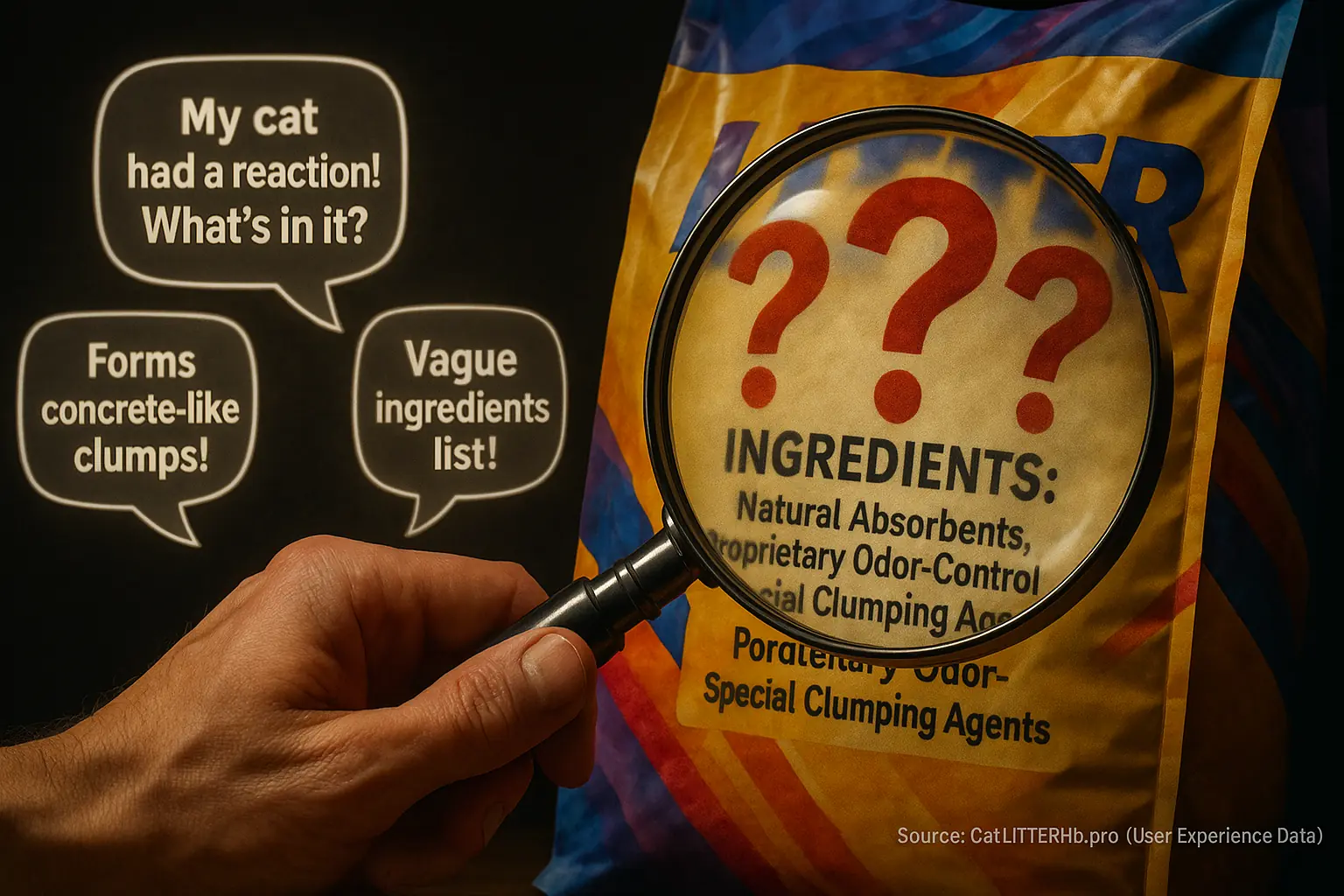
You scan the litter bag. "Natural absorbents," it says. "Proprietary odor-control blend." Helpful? Not really. This vagueness is common. Many cat litter brands create a transparency gap. They provide incomplete ingredient lists. Owners are left guessing. Knowing what you pour into the box becomes a challenge.
This lack of full disclosure impacts your choices. Making informed decisions becomes difficult. The problem worsens if your cat has sensitivities. What if your feline friend is allergic to one unnamed "natural absorbent"? Without specifics, choosing litter is a risky game. User experiences we analyze highlight this frustration. Many owners need precise information for pets with allergies. Or specific health needs.
Marketing claims aim to sell products. Simple. These messages simplify complex realities. They might omit details about composition. Performance realities can be glossed over. So, that "revolutionary clumping action" advertised? User reviews tell a different story. Many report it turns to concrete in the box. That is the power of shared experience. Cat Litter Hub's analysis of user-generated content helps you navigate this hype. Critically examining marketing and seeking collective insights brings clarity.
Understanding potential discrepancies is the first step. You become an empowered consumer. You learn to scrutinize claims. You see beyond glossy packaging. Cat Litter Hub undertakes the work of analyzing user feedback. Our synthesis of owner experiences provides clarity. We do not conduct laboratory tests. We do not deconstruct patents. Our strength is deciphering the community's collective voice. This offers a powerful, evidence-based counter-narrative to simplified marketing. Become your own investigator. Arm yourself with data from real users.

